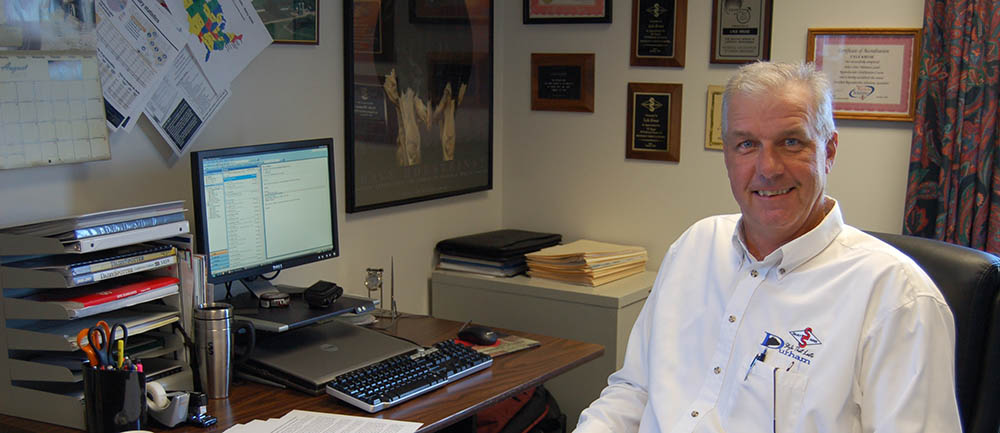
Lyle Kruse, V.P. of U.S. Market Development, Select Sires, Inc.
Over the last decade, we have seen significant changes in the dairy industry, including the adaptation of new technologies and management of reproduction and genetics:
- Cow and heifer reproductive efficiency has vastly improved in the last 10 years, leading to more replacements each year and higher confidence in precision breeding strategies.
- Improvements in the processing of sex-sorted semen and user applications have led to more confidence in using sex-sorted semen in lactating cows, as well as heifers.
- Genomic testing and the resulting data has been available during the last decade. Aided by the increased accuracy of genomic predictions, the dairy industry has seen a significant increase in the pace of genetic improvement. The graph below shows Net Merit Dollars (NM$) averages by the year Holstein sires entered A.I. service in the U.S. since 2005:
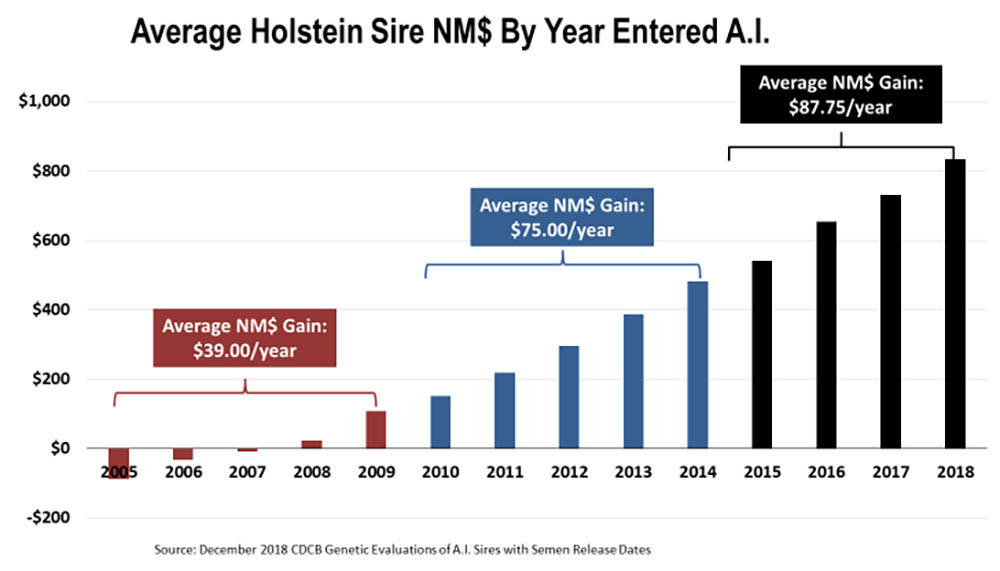
As this chart demonstrates, the pace of genetic gain for Holstein sires over the last ten years has greatly exceeded previous genetic gains and has increased in recent years.
During the first ten years of the genomic era, there has been an increase in the number of Holstein sires designated as ‘Active”, which should be available for U.S. dairy owners to purchase for use in their operations. With the December 2018 sire summary, there were 862 daughter-proven sires and 2,721 genomic young sires on the NAAB Active Holstein sire lists. In the histogram below, all active Holstein sires are plotted into NM$ groups based on the December 2018 sire summary data:
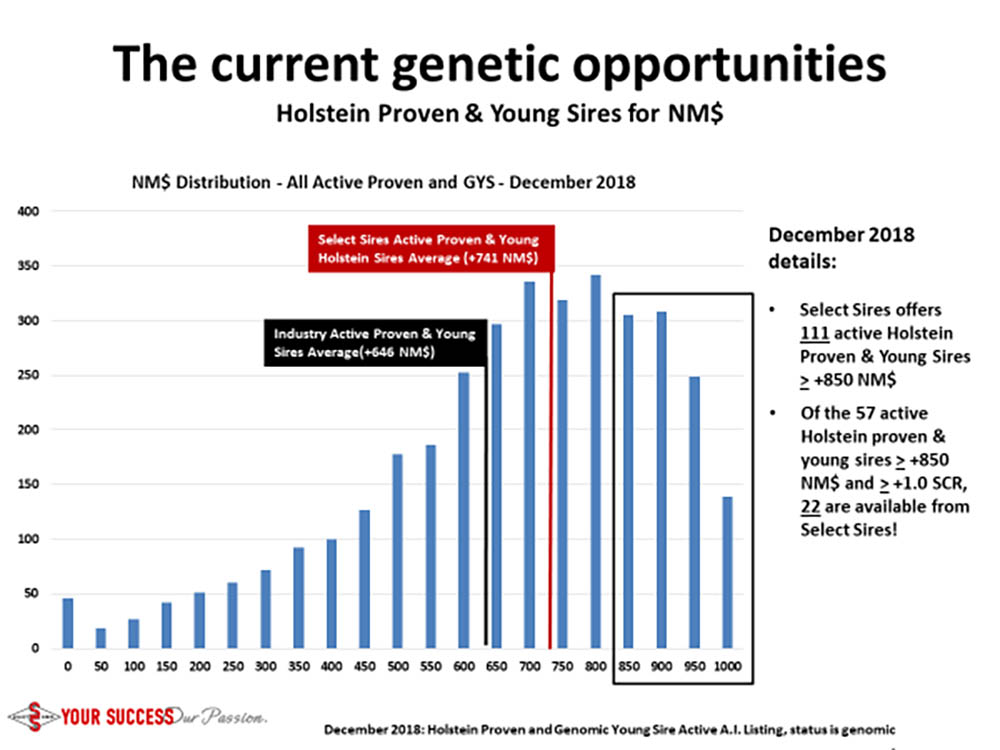
Of the 3,180 Active Holstein daughter-proven and genomic young sires plotted into this chart, there are 703 elite NM$ sires that are available to purchase that are at or exceed +850 NM$. With the advancements in genetic technologies, dairy producers today are provided with a tremendous opportunity to make significant genetic improvement and an expenditure in genetics has never provided a better return on the investment.
It’s interesting to note that of the 57 active Holstein proven & young sires that are > +850NM$ and > +1.0SCR, 22 of those bulls call Select Sires home! That’s nearly one-half that provide you with genetic options from a source you can trust!
When comparing sire options, Dr. Chad Dechow, Penn State University researched how much dairy owners can invest in elite genetics and his data reflects how economically feasible the investment in elite genetics is today. Dr. Dechow’s research led to the conclusion that dairy owners can justify paying:
- $15.91 per unit more for each $100 of NM$ if using genomic young sires.
- $17.31 per unit more for each $100 of NM$ if using daughter-proven sires.
If your sire selection includes a sire semen fertility component, the Council on Dairy Cattle Breeding (CDCB) also offers a summary of Sire Conception Rate (SCR) based on pregnancy check results. Of the sires over +850 NM$ available to use, there are 57 sires that are also +1.0 or higher for SCR. According to Dr. Dechow’s research, (Dechow, Hoard’s Dairyman, Feb. 25, 2018) dairy owners can justify paying:
- $6.50 more for each point of SCR value when used on cows.
- $2.50 more for each point of SCR value when used on heifers.
As dairy owners are challenged with the competitive landscape of a global-based dairy market and limited profit margins, it is imperative to fill each slot in the barn with the most profitable cows possible. Every dairy owner likely has their own definition of what fits their description of a profitable cow. Cows that can efficiently produce high volumes of quality milk over multiple lactations, stay healthy and get pregnant within a reasonable amount of time are likely a common goal. Selection indexes, such as NM$ are designed to allow dairy owners a simple index ranking to select future genetic levels for selection of sires, as well as cows or heifers in the operation chosen to create future replacements for the operation.
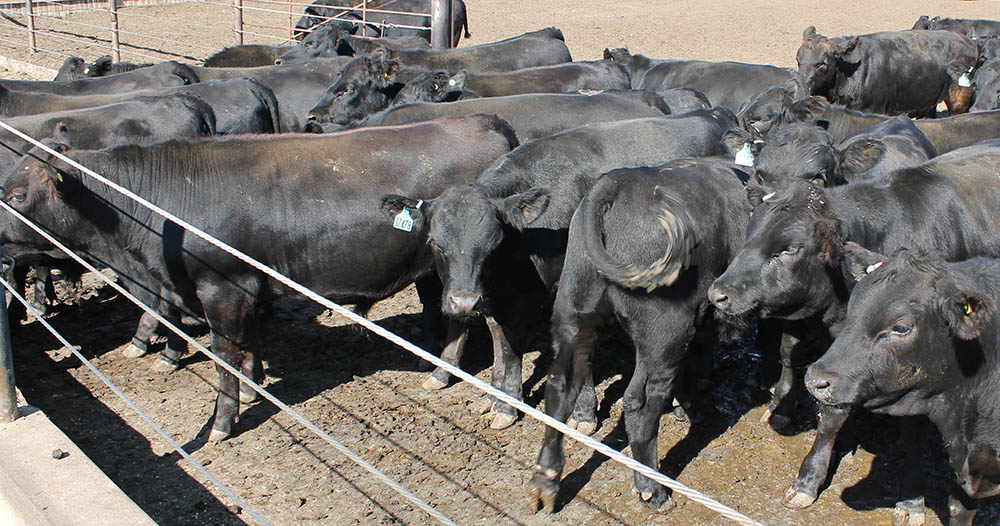
With replacement heifer rearing costs often exceeding cash value, a growing number of dairy owners are recognizing the need to limit investing in excess replacement heifers and have developed a strategic breeding approach using a mix of conventional semen, sexed semen, and beef semen. Embryo use is also gaining popularity among the more progressive commercial producers. A well-designed strategic breeding program allows herd owners the opportunity to genetically rank cows and heifers in the operation using genomic data or if not available, parent average data to determine which cows and heifers are given the opportunity to make the next generation of replacements in the operation. If managed properly, this strategy should lead to significant increases in the overall genetic levels for future generations in the operation.
The change in mindset needed to maximize a strategic breeding program, which will lead to fewer excess replacement heifers, is to make the best possible heifers you can afford to invest in. Using the most elite sires for an economic-based selection index, such as NM$ is a sound investment and will put you on the path to better future replacements, increasing your competitive position in the fast-paced future global dairy race. Make your next generation your best!
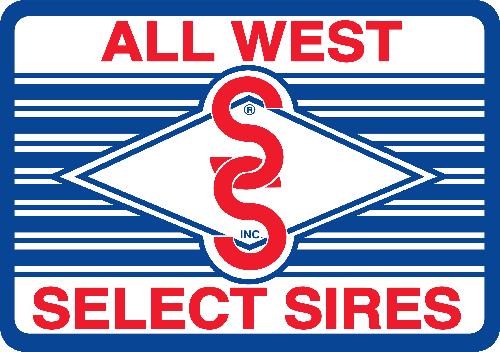
 .
. .
. .
. .
. .
. .
.